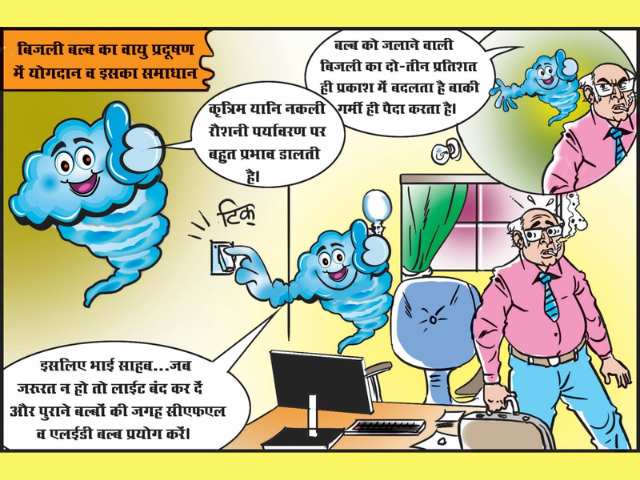आर्टिफीशियल रोशनी से पर्यावरण पर महत्वपूर्ण प्रभाव पड़ते हैं। वैश्विक बिजली की खपत का लगभग 15 प्रतिशत और दुनिया भर में ग्रीनहाउस गैस के उपयोग का पांच प्रतिशत अकेले प्रकाश व्यवस्था के लिए जिम्मेदार ठहराया जा सकता है।
रोशनी की जरूरत न होने पर बल्ब बंद कर देने चाहिए। बल्ब को चलाने वाली बिजली का केवल दो से तीन प्रतिशत ही प्रकाश में तब्दील होता है। बल्ब के काम करने के लिए, अंदर के टंगस्टन फिलामेंट को उस बिंदु तक गरम किया जाता है जिससे वह चमकता हो।
इस प्रकार के बल्ब अच्छे नहीं होते क्योंकि बल्ब को दी जाने वाली बाकी बिजली जो प्रकाश में नहीं बदलती है, वो गर्मी पैदा करती है। अन्य कई लाइट अधिक अच्छे विकल्प हैं।
उदाहरण के लिए, सीएफएल और एलईडी पुराने फिलामेंट बल्बों की तुलना में 75 प्रतिशत और 90 प्रतिशत कम ऊर्जा का उपयोग करते हैं।
अपने क्षेत्र की मौसम की जानकारी जानने के लिए नीचे दिए गये लिंक पर क्लिक करें :
Artificial lighting has a significant impact on the environment. Approximately 15% of global electricity consumption and five percent of worldwide greenhouse gas emissions can be attributed solely to lighting systems.
When light is not needed, bulbs should be turned off. Only two to three percent of the electricity used to power a bulb is actually converted into light. To make a bulb work, the tungsten filament inside it is heated to produce light.
However, such bulbs are not efficient because the remaining electricity that is not converted into light generates heat. There are many other better lighting options available.
For example, CFL and LED lights use 75% and 90% less energy compared to traditional filament bulbs, respectively.
To find out the weather information for your area, click on the link below:

